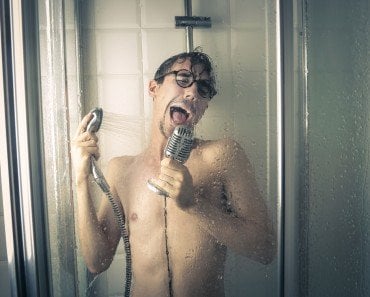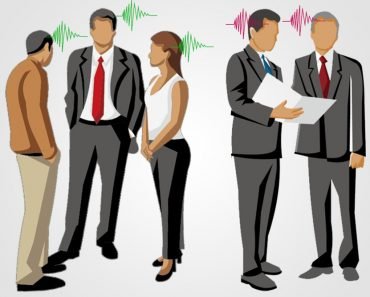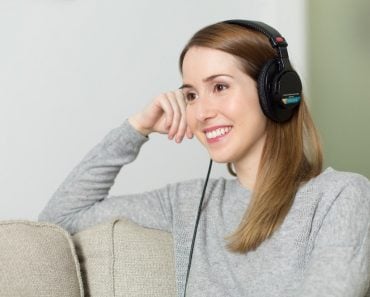Table of Contents (click to expand)
Performers in a recording studio will often wear headphones to isolate their voice from different sounds, ensuring that the performer can hear the other tracks/instruments they are singing with, without compromising the sound of their own recorded voice!
If you have ever watched a “behind the scenes” video about your favorite pop star, you’ve probably gotten a glimpse of them recording their tunes in a studio. They are typically standing in a soundproof room, on the other side of the glass, while a producer or “sound guy” works behind a massive mixing table. The image is clear to most of us because we’ve seen it dozens of times, but one element of that scene doesn’t make sense to everyone. The singer is almost always wearing large headphones while recording, even when they’re playing with other musicians.
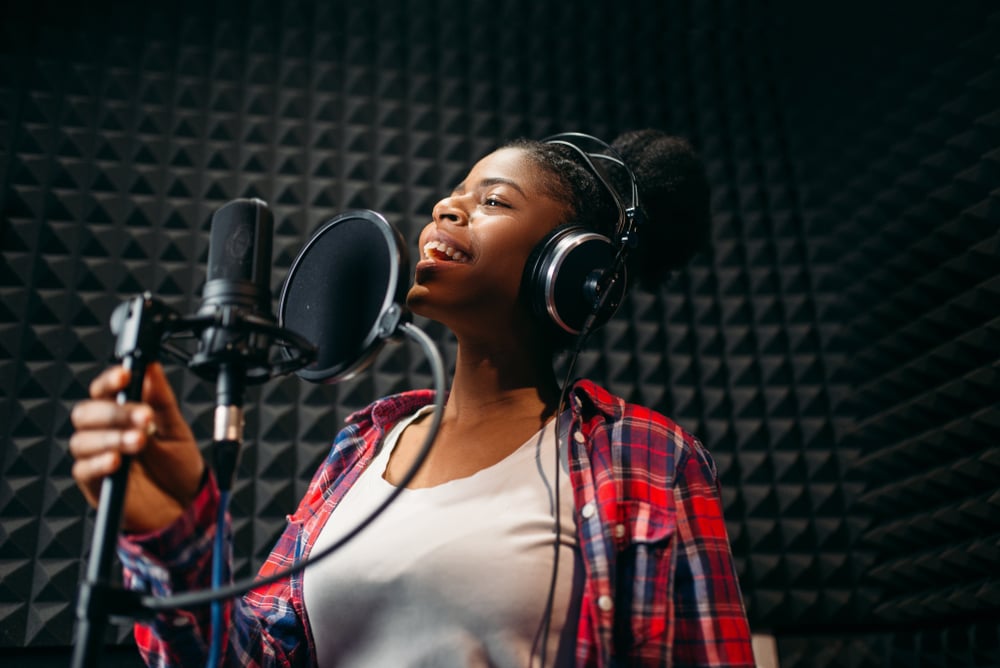
It seems like it would be harder to hear your own voice and ensure that you’re on pitch with headphones on, so why is this such a standard practice during recording sessions?
Recommended Video for you:
How Is Music Recorded?
Before we can dig into the nuances and behavior of performers and musicians in a recording studio, it helps to have a grip on the recording process itself.
In many cases, the reason that music can feel so powerful and emotive is because of the different elements coalescing to create a song—drums, guitar, piano, vocals, and whatever other instrument you want to throw into the mix. In a live show, all of these parts are being created on a stage right in front of you, but that isn’t the case when musicians are recording their albums. In modern music production, multitrack recording is the gold standard, meaning that all the different parts and instruments are recorded individually. This way, the different instrumental lines can be individually edited and mixed to make the end result perfect.
The point of these individual tracks is to prevent bleed from one instrument into the recording microphone of another. For example, if you have three microphones set up for a singer, a guitar player and a drum kit, the sound of the drums and guitar will almost certainly be picked up by the microphone in front of the singer. This can make the sound muddied and less sharp, and will also make it harder to edit later. Imagine trying to talk to someone in a crowded bar; even if you are standing directly next to your friend, and are talking right into their ear, they might still struggle to hear because of all the other noise and commotion in the background.
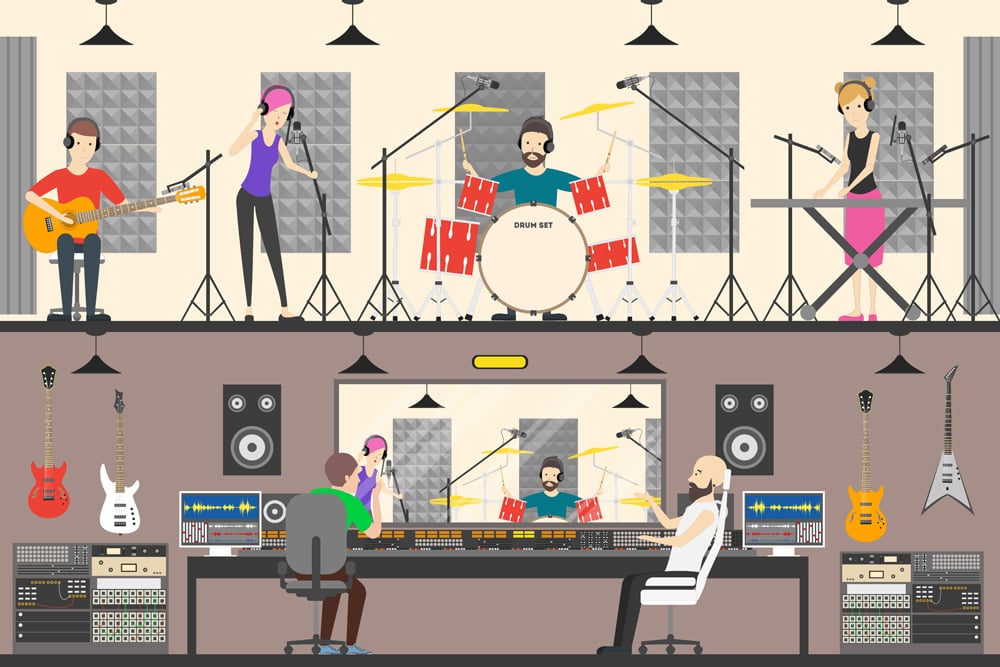
Recording each instrument or vocalist separately effectively eliminates this overlapping “bleed” of noise, making sure that each recorded track is clean and clear.
Why Are Headphones Used In A Recording Studio?
When a singer works in a recording studio, they will often overdub their voice onto the tracks of the instruments that have already been recorded. As mentioned above, if they were to all be recording in the same room, it would cause bleed, so a singer typically records their songs alone, or at least in a private, soundproofed room away from the rest of the band. The singer needs to be able to hear the rest of the tracks to properly fit their vocals into that mix, but playing the tracks out of a speaker would be picked up by the singer’s microphone. Therefore, headphones are the logical choice.
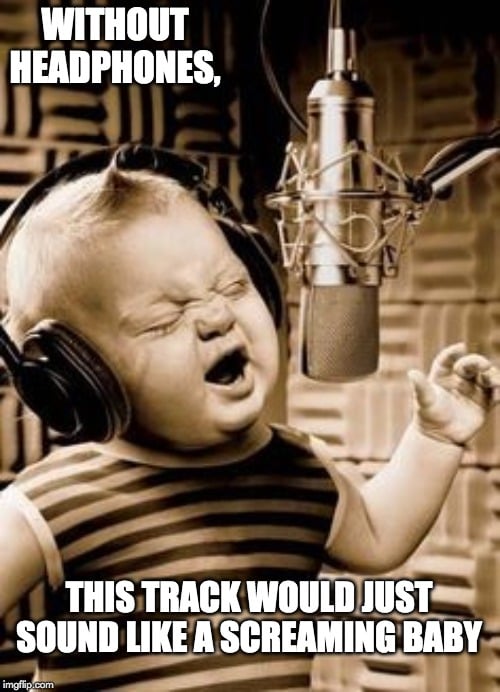
Whether the tracks have already been recorded before the singer overdubs, or if the band is recording simultaneously in a different room, the headphones keep the singer keyed in to the music without having any external noise being picked up by his or her microphone. Obviously, the headphones should be tightly fitting, and of a high quality to ensure the recording process is successful. Closed-back headphones are much more isolating, and prevent almost any sound from escaping or entering, making them great for recording, but not as good for mixing and editing.
Headphones can also be useful for in-home studios or amateur setups, in which the acoustics may not be ideal or fully isolated. Unless you are working in a professional mixing studio, headphones will help you get a real feel for the sound of the other tracks, without drowning them out with the sound of your own instrument or voice. While it is usually recommended that mixing and editing be initially done with speakers and studio monitors, rather than headphones, they are a great tool to see how your tracks will sound to people in headphones, which many people will use to eventually consume your music!
What Do Performers Use During Live Shows?
Given the reason behind using headphones in the recording studio, it makes you wonder how performers manage to keep their performances straight during a live performance, particularly with a large band and a massive screaming crowd of fans! Singers don’t wear headphones, but they often use in-ear monitors during live performances. In-ear monitors can be tailored so different musicians hear different tracks of instruments at different volumes. For example, a singer may want to hear the vocals of someone else onstage if they’re harmonizing, rather than the mics from the drummer or piano player. With an in-ear monitor, a performer can specify exactly what sounds they want to hear from the performance in their ears.
In the past, performers would often use foldback speakers, which were essentially a different speaker system from what was pointed at the audience. The foldback speakers would be directed at singers or other musicians, and could be customized based on what the singer primarily wanted to hear. However, this approach could result in a lot of excess noise on the stage, as well as some bleed and feedback into the microphones being used onstage. The different foldback speakers could overlap and confuse performers, not only making their performance more difficult, but also exposing musicians to loud, potentially damaging levels of noise during every show.
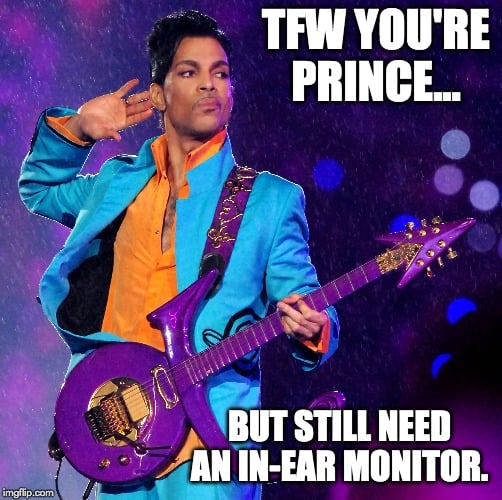
Whether it is the Super Bowl halftime show or a low-key concert at a local venue, in-ear monitors are an essential tool for singers who want to perform at their very best!
A Final Word
If you want to get into the world of recording and performing music, a good pair of studio headphones and reliable in-ear monitors will be important components to your success. Although creating music is a group effort, it is critical that singers and other musicians can isolate different components of a track, avoid bleed from external sources of noise, and hear other performers properly, without the distortion of a crowded venue or an overeager drummer! That’s precisely why you see singers wearing headphones in a recording studio, as well as in-ear monitors when they’re performing!



